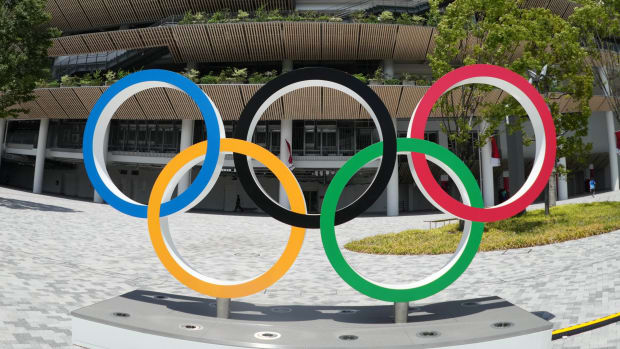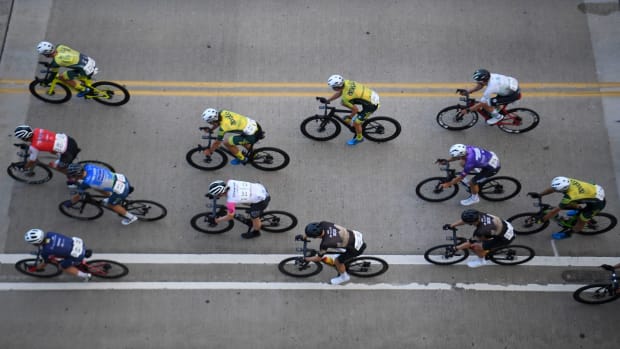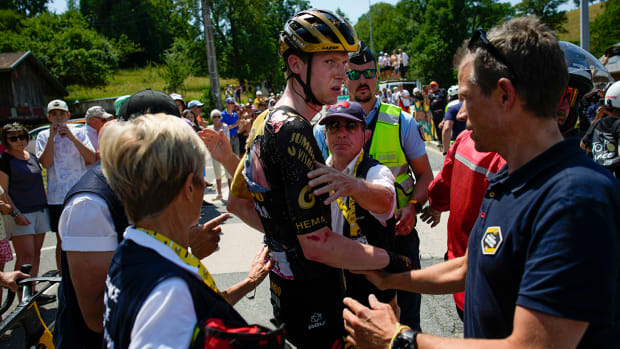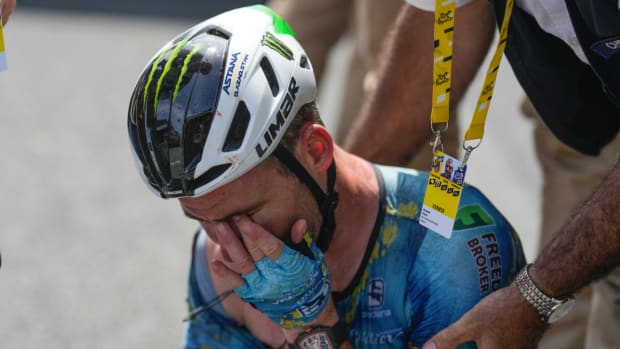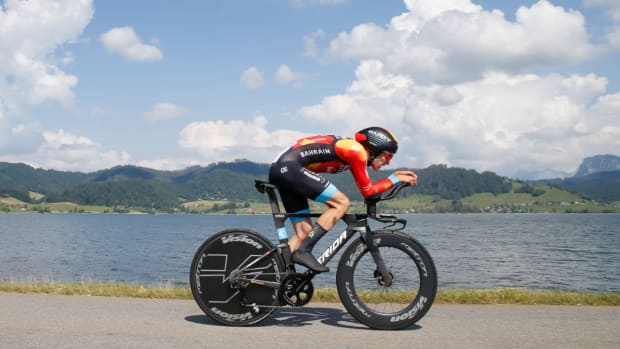2015 Giro route to run from San Remo to Milan
MILAN (AP) Giro d'Italia officials have unveiled a balanced route for next year's race, which they believe will allow cyclists to compete in the Tour de France as well as the Italian classic.
The 2015 Giro will take the riders from San Remo to Milan, via central Italy, the Dolomites and the Alps over a total of 3,481.8 kilometers (2,163.6 miles) from May 9-31.
Organizers revealed the 21-stage route on Monday, including five days in the high mountains and seven medium mountain stages. There are also seven legs for sprinters, an individual time trial and a team one.
There are two rest days and relatively short transfer distances, which organizers hope will convince many of the big-name Grand Tour contenders to join Alberto Contador in riding both the Giro and Tour in 2015.
''Looking at the recovery time, I think it's possible to do the double,'' race director Mauro Vegni said. ''It's a hard Giro but it's a very balanced one. The climbs are spread out and there are very few transfers. It's the lowest amount of transfers we've had in 20 years, down to 800 kilometers or so.
''The ideal would be to race both the Giro and the Tour as similar to a two-legged football match and then the Vuelta as a one-off.''
Contador announced last month that he would compete in both the Giro and the Tour next year.
The two-time Tour champion won the Giro in 2008 and was also triumphant in Milan in 2011 but was stripped of that title for testing positive in the 2010 Tour.
Contador is aiming to become the first rider to win both the Giro and the Tour in the same year since Marco Pantani achieved that feat in 1998.
The Spaniard was at the unveiling of the route at Milan's Palazzo del Ghiaccio, along with a number of his rivals, including Fabio Aru, Rigoberto Uran and new world champion Michal Kwiatkowski as well as International Cycling Union President Brian Cookson. Defending champion Nairo Quintana was absent as he recovers at home in Colombia after his Vuelta crash.
''When I made the decision of course I didn't know the route,'' Contador said. ''I like this course, it's suited to my characteristics as an aggressive rider.
''This Giro is very tough, with a lot of climbs, but the factor that makes it different to the Tour or the Vuelta is the weather, often it can be cold or snowy in Italy at that time of year.''
The Giro begins with a team time trial from San Lorenzo al Mare to San Remo. It also features a long individual race against the clock on the 14th stage, along a 59-kilometer (36-mile) route from Treviso to Valdobbiadene.
There are six mountain-top finishes, with the first - the Abetone - coming on stage five. However, the most daunting tests come in the final week with finishes up Madonna di Campiglio, Aprica, Cervinia, and Sestriere.
The Aprica, at the end of stage 16, has maximum gradients of 15 percent and comes just after the cyclists have scaled gradients of up to 18 percent on the Mortirolo climb.
The penultimate stage up to Sestriere contains the highest peak of the Giro - the Colle delle Finestre - and is likely to decide the winner, with the final 185K (114.96-mile) leg from Torino to Milan set to be mainly an extended victory parade.
As well as a lengthy time trial, there are three days which stretch to more than 200K (124 miles), with the seventh stage from Grosseto to Fiuggi topping out at 263K (163.4 miles).
